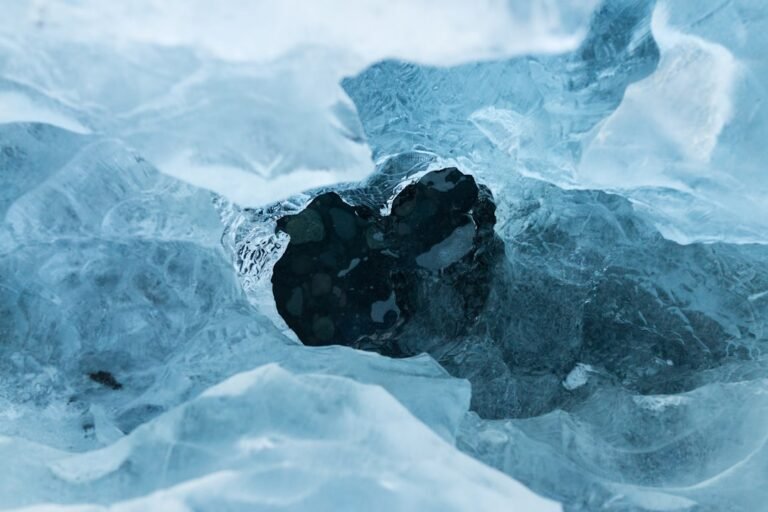How Are Cryogenic Techniques Used in Preserving London’s Historic Artefacts?

Cryogenic preservation has been used for centuries, with the ancient Egyptians using ice and snow to preserve food and medicine. However, it was not until the 20th century that cryogenic techniques were applied to the preservation of artefacts. So, how are cryogenic techniques used in preserving London’s historic artefacts?
Cryogenic preservation is a technique used to preserve artefacts at extremely low temperatures. The term “cryogenic” refers to temperatures below -150 degrees Celsius (-238 degrees Fahrenheit). This method involves freezing the artefacts to slow down or halt the natural decay process.
The preservation of artefacts is of great importance as it allows us to maintain and study our cultural heritage. Artefacts provide valuable insights into the past, allowing us to understand and appreciate different cultures and civilizations.
They are also irreplaceable, as once an artefact is lost or damaged, it can never be fully restored. Cryogenic preservation offers a way to protect these precious artefacts from deterioration and damage, ensuring that they can be enjoyed by future generations.
SUMMARY
- Cryogenic techniques are becoming increasingly popular for preserving artefacts.
- Preserving London’s historic artefacts is crucial for maintaining the city’s cultural heritage.
- The process involves freezing artefacts to extremely low temperatures.
- Cryogenic preservation has advantages over traditional preservation methods.
- Liquid nitrogen plays a key role in cryogenic preservation.
The Importance of Preserving London’s Historic Artefacts
London is a city rich in history and culture, with a wealth of historic artefacts that tell the story of its past. From ancient Roman artefacts to medieval manuscripts, these artefacts provide a glimpse into the city’s vibrant history. Preserving London’s artefacts is crucial to protect this cultural heritage and ensure that future generations can learn from and appreciate it.
London’s historic artefacts are not only important for their historical value but also for their cultural significance. They represent the identity and heritage of the city and its people. By preserving these artefacts, we can maintain a connection to our past and understand how it has shaped our present.
However, London’s artefacts face numerous threats that put them at risk of damage or destruction. These threats include natural disasters such as fires or floods, as well as human activities such as vandalism or theft. Climate change is also a growing concern, as rising temperatures and humidity levels can accelerate the deterioration of artefacts. It is therefore crucial to implement effective preservation techniques, such as cryogenic preservation, to safeguard London’s cultural heritage.
The Science Behind Cryogenic Techniques
Cryogenic preservation involves subjecting artefacts to extremely low temperatures to slow down or halt the decay process. The process begins by placing the artefact in a specially designed container, which is then filled with liquid nitrogen. Liquid nitrogen is a cryogenic fluid that has a boiling point of -196 degrees Celsius (-321 degrees Fahrenheit). The artefact is then gradually cooled down to the desired temperature, which is typically below -150 degrees Celsius (-238 degrees Fahrenheit).
The low temperatures achieved through cryogenic preservation have several effects on artefacts. They slow down the chemical reactions that cause decay, such as oxidation or microbial growth. This helps to preserve the physical integrity of the artefact and prevent it from deteriorating further.
Furthermore, the low temperatures reduce the activity of enzymes and microorganisms that can cause damage to the artefact. Lastly, freezing the artefact can also help to kill any existing pests or insects that may be present.
There are several benefits to using cryogenic preservation techniques.
- Firstly, it allows for long-term preservation of artefacts without the need for constant monitoring or maintenance. Once an artefact has been frozen, it can be stored for extended periods without any significant deterioration.
- Secondly, cryogenic preservation is a non-invasive method that does not require any chemicals or treatments that could potentially damage the artefact. This makes it a safe and effective option for preserving delicate or fragile items.
Cryogenic Preservation vs Traditional Preservation Methods
Cryogenic preservation offers several advantages over traditional preservation methods. One of the main advantages is its ability to preserve artefacts without causing any damage or alteration to their original state. Traditional preservation methods often involve the use of chemicals or treatments that can alter the appearance or composition of the artefact. Cryogenic preservation, on the other hand, simply freezes the artefact, allowing it to be preserved in its original form.
Another advantage of cryogenic preservation is its ability to halt the decay process. Traditional preservation methods may slow down decay, but they cannot completely stop it. Cryogenic preservation, however, can effectively halt decay by reducing the activity of enzymes and microorganisms that cause deterioration.
Despite these advantages, cryogenic preservation does have some limitations. One limitation is the cost associated with maintaining the low temperatures required for preservation. Liquid nitrogen, which is used to achieve these temperatures, can be expensive to produce and store. Additionally, cryogenic preservation requires specialized equipment and facilities, which may not be readily available in all locations.
Despite these limitations, cryogenic preservation is becoming more popular due to its effectiveness and non-invasive nature. It offers a viable alternative to traditional preservation methods and has been successfully used to preserve a wide range of artefacts.
The Role of Liquid Nitrogen in Artefact Preservation
Liquid nitrogen plays a crucial role in cryogenic preservation as it is used to achieve and maintain the low temperatures required for preservation. Liquid nitrogen is a cryogenic fluid that has a boiling point of -196 degrees Celsius (-321 degrees Fahrenheit). It is produced by cooling and compressing air, which causes it to condense into a liquid state.
In cryogenic preservation, liquid nitrogen is used to create a controlled environment for the artefact. The artefact is placed in a specially designed container, which is then filled with liquid nitrogen. The container is sealed to prevent any air or moisture from entering. As the liquid nitrogen evaporates, it creates a cold and dry atmosphere inside the container.
The use of liquid nitrogen in cryogenic preservation offers several benefits.
- Firstly, it allows for precise control of the temperature, ensuring that the artefact is preserved at the desired level. Liquid nitrogen can be easily adjusted to achieve different temperatures, making it suitable for a wide range of artefacts.
- Secondly, liquid nitrogen creates a dry environment, which helps to prevent the growth of microorganisms and the formation of condensation. This helps to further protect the artefact from deterioration.
Cryogenic Techniques Used in the Preservation of London’s Artefacts
Cryogenic preservation techniques have been used to preserve a variety of artefacts in London. One example is the preservation of ancient Roman artefacts found in the city. They provide valuable insights into the daily life and culture of the Romans in London. By subjecting these artefacts to cryogenic preservation, they can be protected from further decay and damage.
The preservation process for ancient Roman artefacts typically involves cleaning and stabilizing the artefacts before freezing them. This may include removing any dirt or debris from the surface of the artefact and applying a protective coating to prevent further deterioration. Once prepared, the artefacts are placed in a container filled with liquid nitrogen and gradually cooled down to the desired temperature.
Another example of cryogenic preservation in London is the preservation of medieval manuscripts. These manuscripts are delicate and prone to deterioration due to their age and fragility. Cryogenic preservation offers a safe and effective way to protect these valuable documents from further damage.
The preservation process for medieval manuscripts involves carefully handling and preparing the manuscripts before freezing them. This may include repairing any tears or damage, as well as applying a protective coating to prevent further deterioration. Once prepared, the manuscripts are placed in a container filled with liquid nitrogen and gradually cooled down to the desired temperature.
The preservation of these artefacts is of great importance as they provide valuable insights into London’s history and culture. By preserving these artefacts using cryogenic techniques, we can ensure that they are protected for future generations to study and appreciate.
Challenges and Limitations of Cryogenic Preservation
While cryogenic preservation offers many benefits, it also presents several challenges and limitations. One of the main challenges is the cost associated with maintaining the low temperatures required for preservation. Liquid nitrogen, which is used to achieve these temperatures, can be expensive to produce and store. Additionally, the equipment and facilities required for cryogenic preservation can be costly to acquire and maintain.
Another challenge is the potential for damage to the artefact during the freezing and thawing process. Artefacts are often delicate and fragile, and the extreme temperatures involved in cryogenic preservation can cause damage if not handled properly. It is crucial to carefully prepare and handle the artefact before freezing it to minimize the risk of damage.
Cryogenic preservation also has some limitations. One limitation is the size of the artefact that can be preserved. The containers used for cryogenic preservation are typically small in size, which limits the size of the artefacts that can be preserved. Larger artefacts may require specialized equipment or facilities that are not readily available.
Another limitation is the need for constant monitoring and maintenance of the preservation environment. Cryogenic preservation requires a controlled environment with stable temperatures and humidity levels. Any fluctuations in these conditions can potentially damage the artefact. Regular monitoring and maintenance are therefore necessary to ensure that the preservation environment remains stable.
Despite these challenges and limitations, cryogenic preservation has proven to be an effective method for preserving a wide range of artefacts. With proper care and attention, these challenges can be overcome, allowing for the successful preservation of London’s historic artefacts.
Case Studies: Successful Cryogenic Preservation of London’s Historic Artefacts
There have been several successful examples of cryogenic preservation in London, demonstrating its effectiveness in preserving historic artefacts. One such example is the preservation of a collection of ancient Egyptian artefacts at the British Museum. These artefacts include mummies, sarcophagi, and other burial objects that provide valuable insights into ancient Egyptian culture and beliefs.
The preservation process for these artefacts involved carefully cleaning and stabilizing them before freezing. This included removing any dirt or debris from the surface of the artefacts and applying a protective coating to prevent further deterioration. Once prepared, the artefacts were placed in a specially designed container filled with liquid nitrogen and gradually cooled down to the desired temperature.
The preservation of these ancient Egyptian artefacts is of great importance as they are irreplaceable and provide valuable insights into the history and culture of ancient Egypt. By preserving these artefacts using cryogenic techniques, they can be protected from further decay and damage, ensuring that they can be studied and appreciated by future generations.
Another example of successful cryogenic preservation in London is the preservation of a collection of medieval stained glass windows at Westminster Abbey. These windows are delicate and prone to deterioration due to their age and fragility. Cryogenic preservation offers a safe and effective way to protect these valuable windows from further damage.
The preservation process for these stained glass windows involved carefully removing them from their frames and cleaning them before freezing. This included repairing any cracks or damage, as well as applying a protective coating to prevent further deterioration. Once prepared, the windows were placed in a specially designed container filled with liquid nitrogen and gradually cooled down to the desired temperature.
The preservation of these stained glass windows is of great importance as they are not only beautiful works of art but also provide valuable insights into the history and culture of medieval England. By preserving these windows using cryogenic techniques, they can be protected for future generations to admire and study.
Future of Cryogenic Techniques in Artefact Preservation
Cryogenic techniques have come a long way since their inception, and advancements in technology continue to improve their effectiveness. One area of advancement is the development of more efficient and cost-effective methods for producing liquid nitrogen. This will help to reduce the cost associated with cryogenic preservation and make it more accessible to a wider range of institutions and organizations.
Another area of advancement is the development of specialized equipment and facilities for cryogenic preservation. This includes the development of larger containers that can accommodate larger artefacts, as well as the development of automated systems for monitoring and maintaining the preservation environment. These advancements will help to overcome some of the challenges and limitations associated with cryogenic preservation.
The potential future uses of cryogenic preservation are vast. It can be applied to a wide range of artefacts, from paintings and sculptures to textiles and archaeological finds. Cryogenic preservation can also be used to preserve biological samples, such as DNA or tissue samples, for scientific research or medical purposes.
Continued research and development are crucial for the future of cryogenic techniques in artefact preservation. This includes research into the effects of low temperatures on different types of materials, as well as the development of new preservation methods and technologies. By investing in research and development, we can further improve the effectiveness and accessibility of cryogenic preservation, ensuring that our cultural heritage is preserved for future generations.
The Significance of Cryogenic Preservation in Preserving London’s Cultural Heritage
In conclusion, cryogenic preservation plays a crucial role in preserving London’s cultural heritage. London is a city rich in history and culture, with a wealth of historic artefacts that provide valuable insights into its past. Preserving these artefacts is of great importance as they represent the identity and heritage of the city and its people.
Cryogenic preservation offers an effective and non-invasive method for preserving these artefacts. By subjecting them to extremely low temperatures, cryogenic preservation can slow down or halt the decay process, protecting the physical integrity of the artefact. It also offers several advantages over traditional preservation methods, including the ability to preserve artefacts in their original state without causing any damage or alteration.
While cryogenic preservation does present some challenges and limitations, these can be overcome with proper care and attention. Advancements in technology and continued research and development will further improve the effectiveness and accessibility of cryogenic preservation.
Preserving London’s cultural heritage is a collective responsibility that requires the efforts of individuals, institutions, and organizations. By embracing cryogenic preservation techniques and investing in their development, we can ensure that London’s historic artefacts are protected for future generations to study and appreciate.
FAQs
What are cryogenic techniques?
Cryogenic techniques involve the use of extremely low temperatures to preserve materials. In the case of artefacts, this involves freezing them to prevent decay and damage. Cryotherapy can also boost your immune system.
How are cryogenic techniques used in preserving London’s historic artefacts?
London’s historic artefacts are preserved using cryogenic techniques by placing them in a specially designed chamber and gradually lowering the temperature to below freezing. This process helps to prevent decay and damage to the artefacts.
What types of artefacts can be preserved using cryogenic techniques?
Cryogenic techniques can be used to preserve a wide range of artefacts, including textiles, ceramics, metal objects, and even human remains.
What are the benefits of using cryogenic techniques to preserve artefacts?
The benefits of using cryogenic techniques to preserve artefacts include preventing decay and damage, extending the lifespan of the artefacts, and allowing for further study and analysis.
Are there any risks associated with using cryogenic techniques to preserve artefacts?
There are some risks associated with using cryogenic techniques to preserve artefacts, including the potential for damage during the freezing and thawing process. However, these risks can be minimized through careful handling and proper equipment.
Who is responsible for preserving London’s historic artefacts using cryogenic techniques?
The responsibility for preserving London’s historic artefacts using cryogenic techniques falls to a team of experts at the Museum of London, who have developed specialized techniques and equipment for this purpose.
Is There Any Scientific Research on Cryotherapy?
Yes, plenty. CLICK HERE for a vast list of scientific resources related to cryotherapy.






